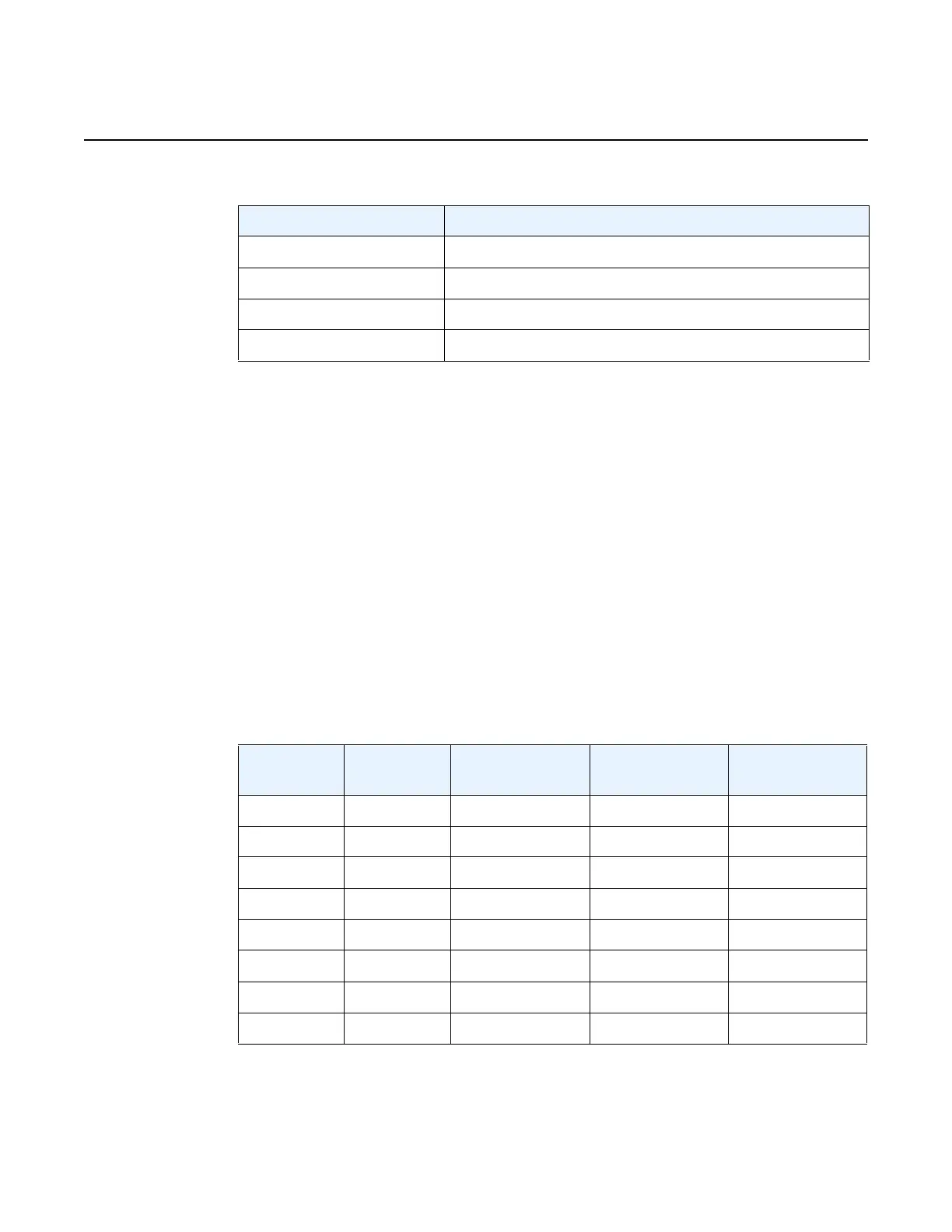7705 SAR Interfaces
74
Interface Configuration Guide
3HE 11011 AAAC TQZZA Edition: 01
For example, if a packet is sent to an MC-MLPPP class 3 queue and all other queues
are empty, the 7705 SAR fragments the packet according to the configured fragment
size and begins sending the fragments. If a new packet arrives at an MC-MLPPP
class 2 queue while the class 3 fragment is still being serviced, the 7705 SAR
finishes sending any fragments of the class 3 packet that are on the wire, then holds
back the remaining fragments in order to service the higher-priority packet.
The fragments of the first packet remain at the top of the class 3 queue. For packets
of the same class, MC-MLPPP class queues operate on a first-in, first-out basis.
The user configures the required number of MLPPP classes to use on a bundle. The
forwarding class of the packet, as determined by the ingress QoS classification, is
used to determine the MLPPP class for the packet. The mapping of forwarding class
to MLPPP class is a function of the user-configurable number of MLPPP classes.
The mapping for 4-class, 3-class, and 2-class MLPPP bundles is shown in Table 8.
Table 7 MC-MLPPP Class Priorities
MC-MLPPP Class Priority
0 Priority over all other classes
1 Priority over classes 2 and 3
2 Priority over class 3
3No priority
Table 8 Packet Forwarding Class to MC-MLPPP Class Mapping
FC ID FC Name MLPPP Class
4-class Bundle
MLPPP Class
3-class Bundle
MLPPP Class
2-class Bundle
7NC000
6H1000
5EF111
4H2111
3L1221
2AF221
1L2321
0BE321

